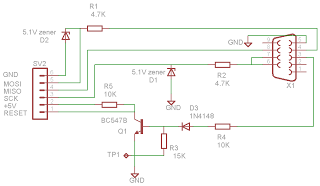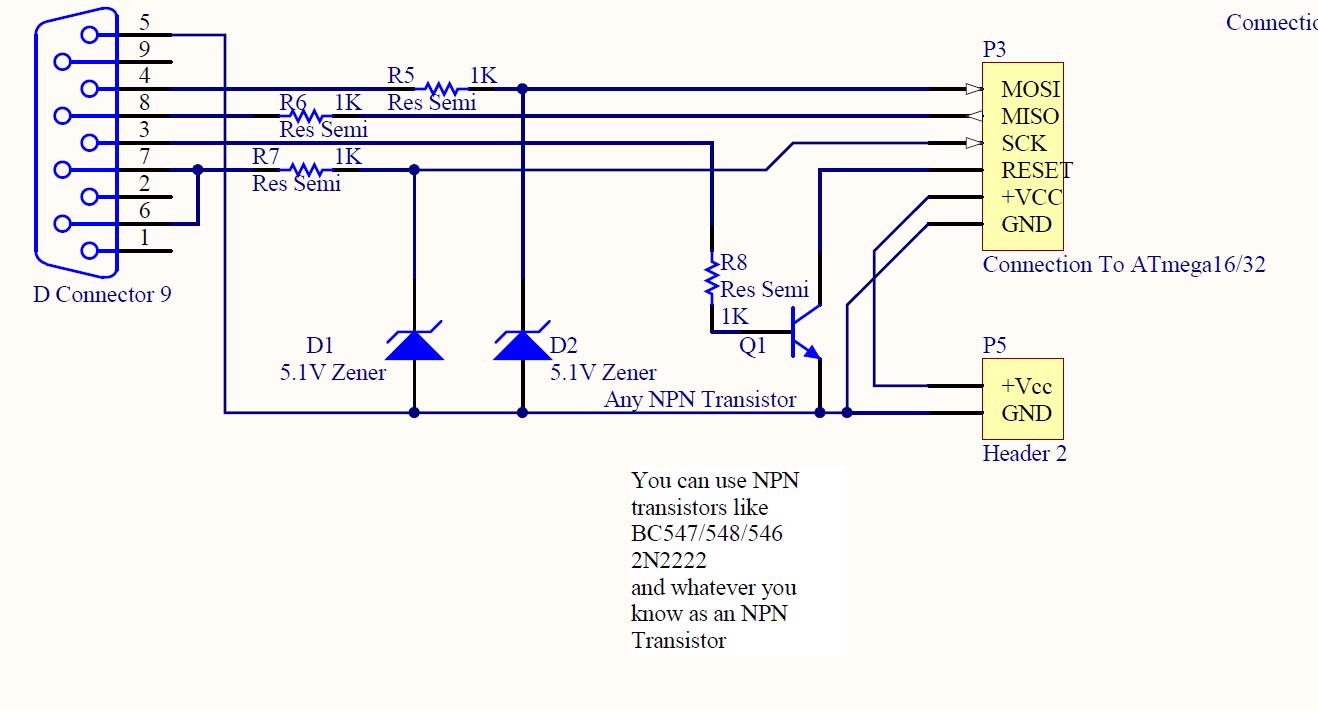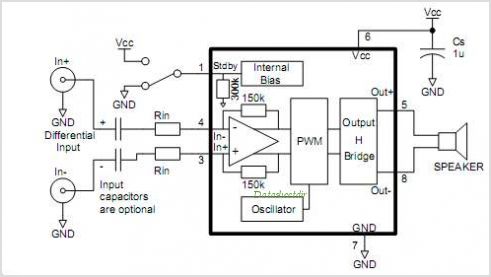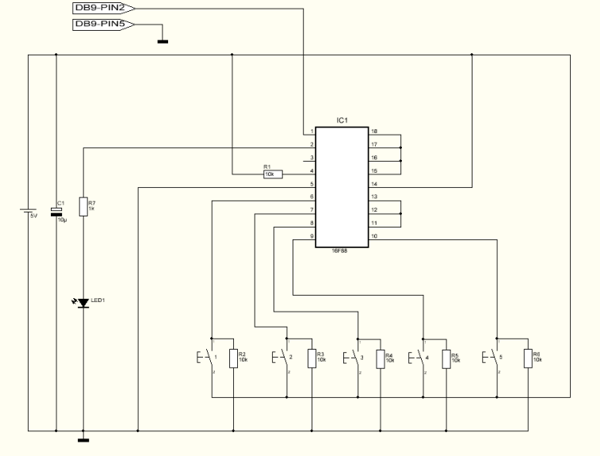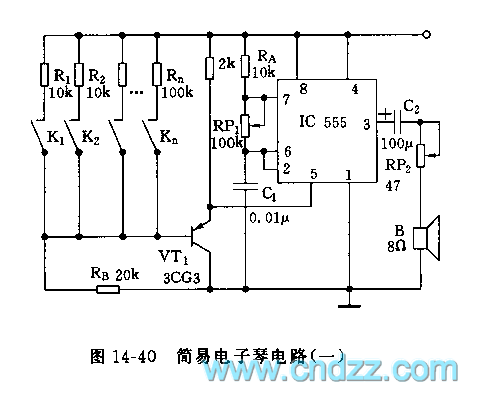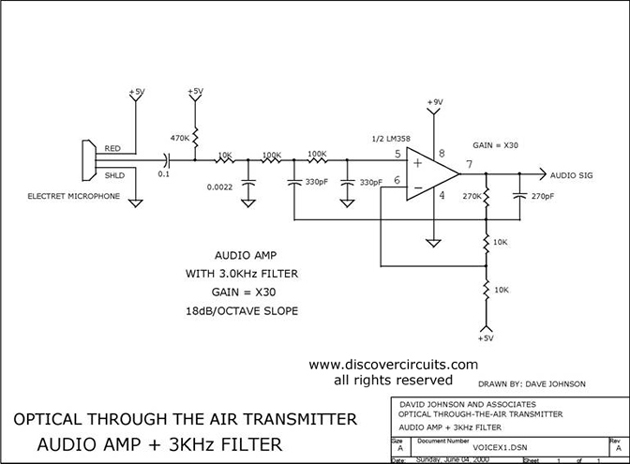
DPPs program key parameters of bandpass filter
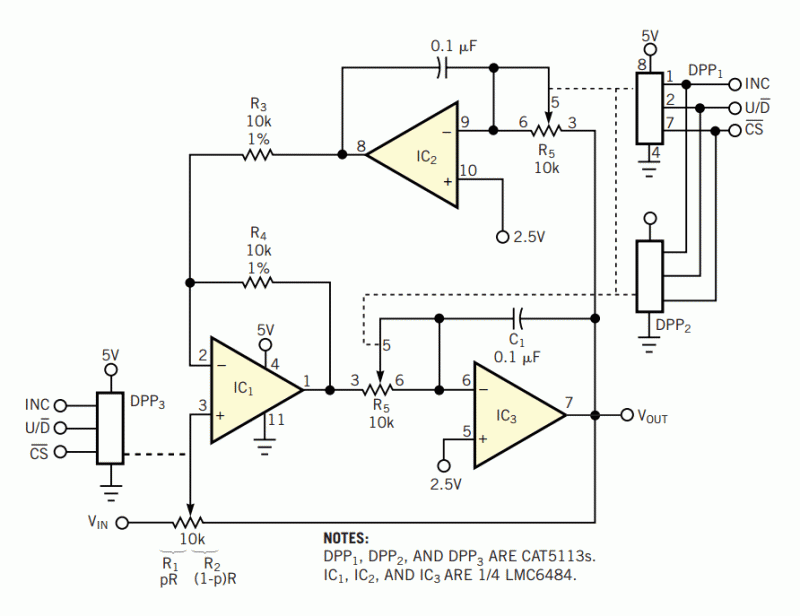
The three-amplifier implementation of the state-variable filter in Figure 1 provides for second-order bandpass, highpass, and lowpass responses. The strength of the circuit, however, is in the bandpass response (VOUT/VIN), in which it's easy to achieve high gain (G) and high Q. These two characteristics are important in applications in which selectivity is a key parameter in the filter. The application value of the circuit becomes even greater when DPPs (digitally programmable potentiometers) control and vary the bandpass filter's center frequency, f0, and passband gain, G.
The described circuit utilizes a three-amplifier configuration to achieve versatile filtering characteristics, specifically focusing on second-order responses. The state-variable filter design is notable for its ability to provide multiple output types—bandpass, highpass, and lowpass—through a single configuration. The bandpass response is particularly emphasized due to its capacity for high gain (G) and a high quality factor (Q), both of which are critical for applications requiring precise frequency selectivity.
In practical applications, the ability to control the center frequency (f0) and gain (G) of the bandpass filter using digitally programmable potentiometers (DPPs) enhances the circuit's functionality. This feature allows for dynamic adjustments, making the filter adaptable to a variety of signal processing tasks. The integration of DPPs can facilitate real-time tuning of the filter, enabling it to respond to changing signal conditions or specific application requirements.
The circuit typically employs operational amplifiers configured in a feedback arrangement to achieve the desired filter characteristics. Each amplifier plays a role in shaping the frequency response, ensuring that the output maintains the necessary phase and amplitude characteristics across the desired frequency range. The design also allows for easy implementation of additional features, such as gain control and frequency modulation, further increasing its versatility in electronic systems.
In summary, the three-amplifier state-variable filter is a robust solution for applications requiring selective signal processing, with the added benefit of programmability through DPPs, enhancing its adaptability and performance in various electronic applications.The three-amplifier implementation of the state-variable filter in Figure 1 provides for second-order bandpass, highpass, and lowpass responses. The strength of the circuit, however, is in the bandpass response (VOUT/VIN), in which it`s easy to achieve high gain (G) and high Q.
These two characteristics are important in applications in which selectivity is a key parameter in the filter. The application value of the circuit becomes even greater when DPPs (digitally programmable potentiometers) control and vary the bandpass filter`s center frequency, f0, and passband gain, G.
🔗 External reference
The described circuit utilizes a three-amplifier configuration to achieve versatile filtering characteristics, specifically focusing on second-order responses. The state-variable filter design is notable for its ability to provide multiple output types—bandpass, highpass, and lowpass—through a single configuration. The bandpass response is particularly emphasized due to its capacity for high gain (G) and a high quality factor (Q), both of which are critical for applications requiring precise frequency selectivity.
In practical applications, the ability to control the center frequency (f0) and gain (G) of the bandpass filter using digitally programmable potentiometers (DPPs) enhances the circuit's functionality. This feature allows for dynamic adjustments, making the filter adaptable to a variety of signal processing tasks. The integration of DPPs can facilitate real-time tuning of the filter, enabling it to respond to changing signal conditions or specific application requirements.
The circuit typically employs operational amplifiers configured in a feedback arrangement to achieve the desired filter characteristics. Each amplifier plays a role in shaping the frequency response, ensuring that the output maintains the necessary phase and amplitude characteristics across the desired frequency range. The design also allows for easy implementation of additional features, such as gain control and frequency modulation, further increasing its versatility in electronic systems.
In summary, the three-amplifier state-variable filter is a robust solution for applications requiring selective signal processing, with the added benefit of programmability through DPPs, enhancing its adaptability and performance in various electronic applications.The three-amplifier implementation of the state-variable filter in Figure 1 provides for second-order bandpass, highpass, and lowpass responses. The strength of the circuit, however, is in the bandpass response (VOUT/VIN), in which it`s easy to achieve high gain (G) and high Q.
These two characteristics are important in applications in which selectivity is a key parameter in the filter. The application value of the circuit becomes even greater when DPPs (digitally programmable potentiometers) control and vary the bandpass filter`s center frequency, f0, and passband gain, G.
🔗 External reference
